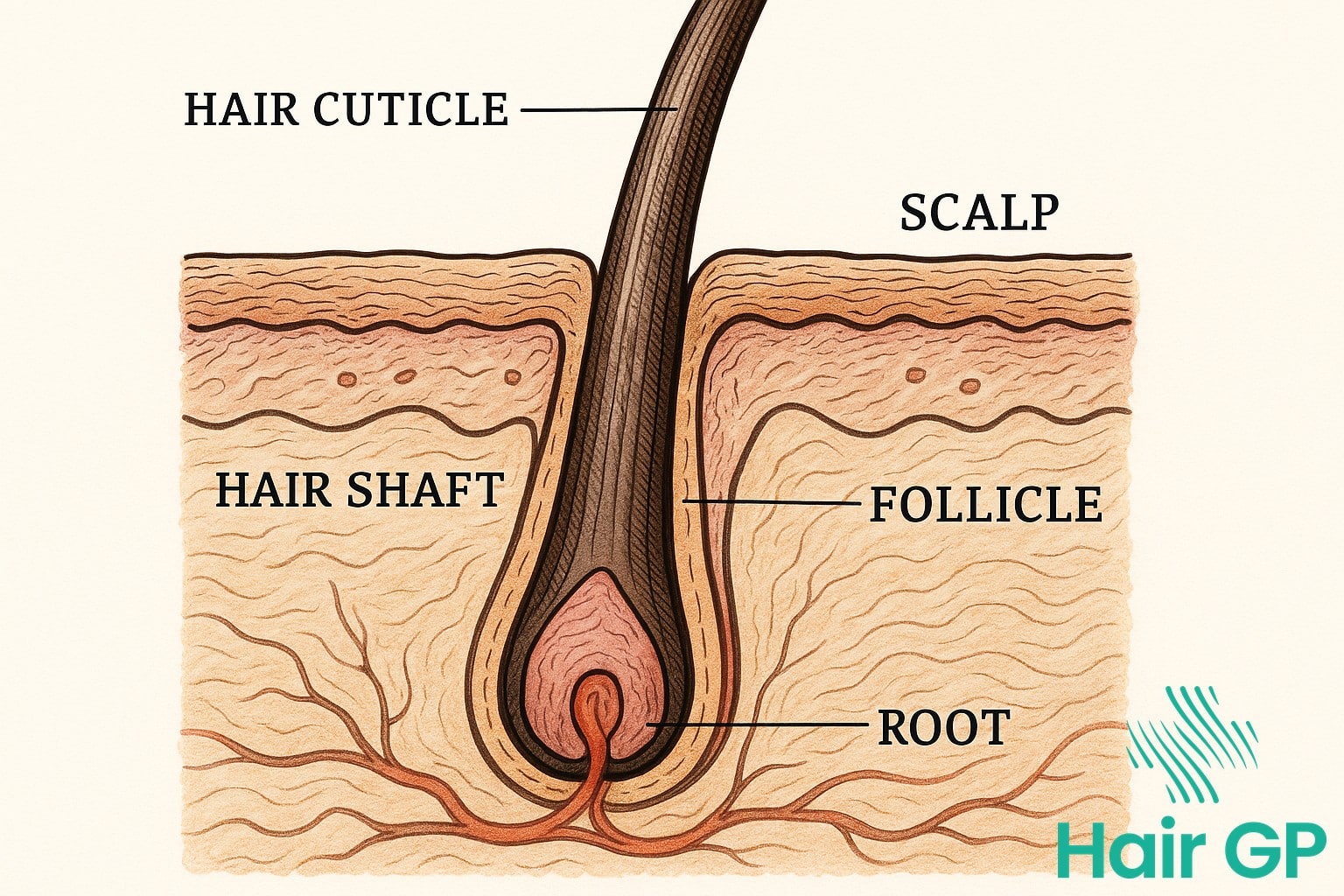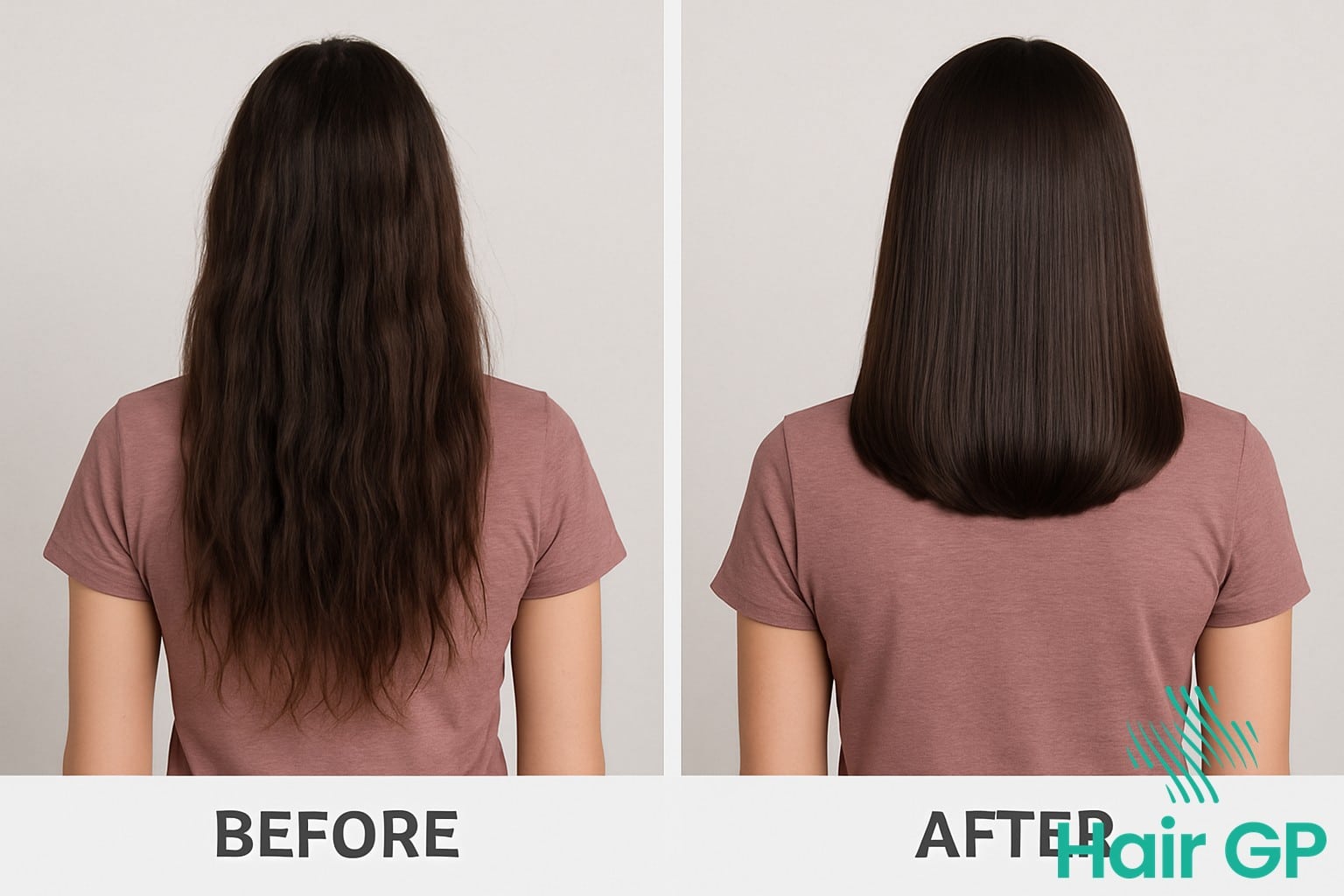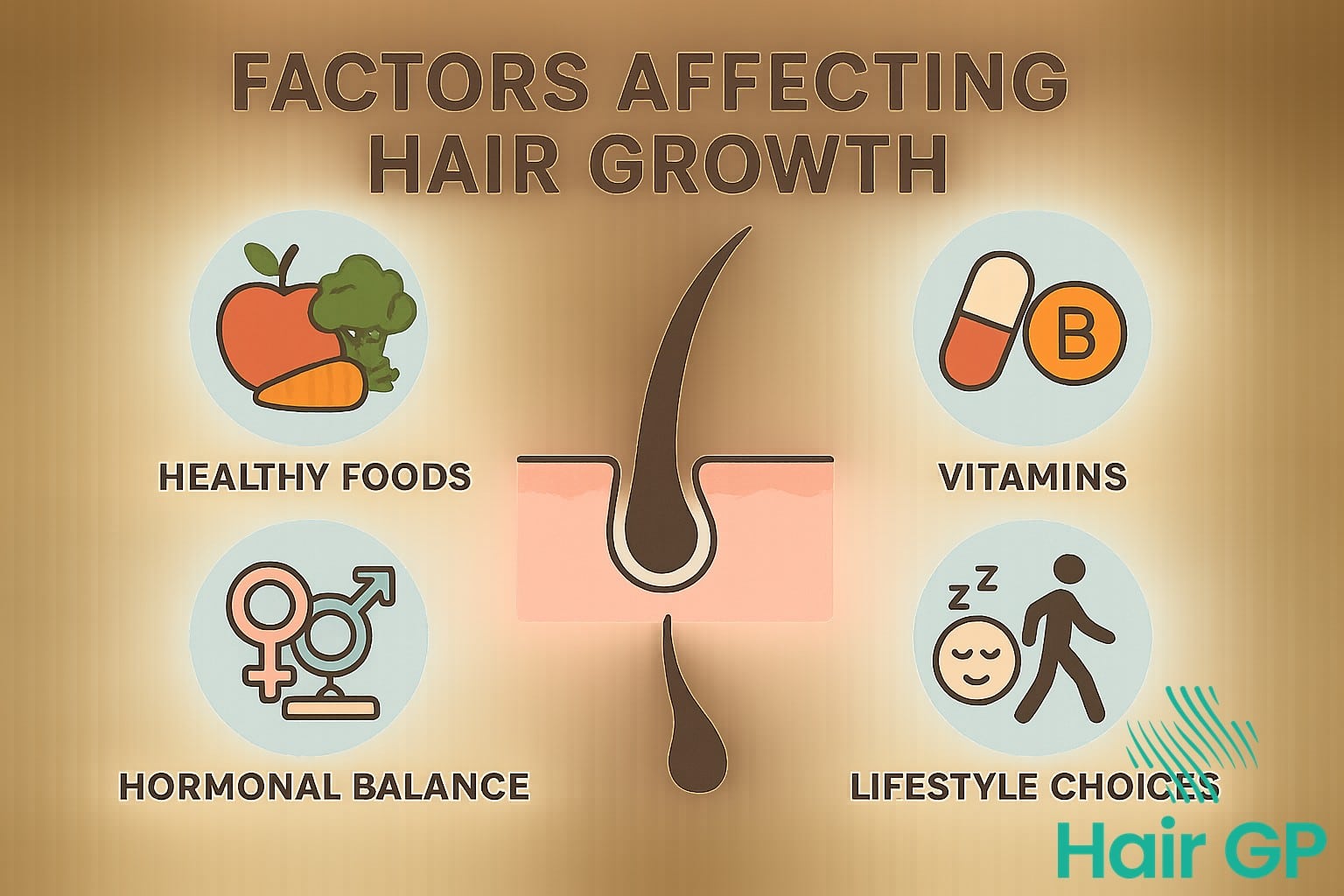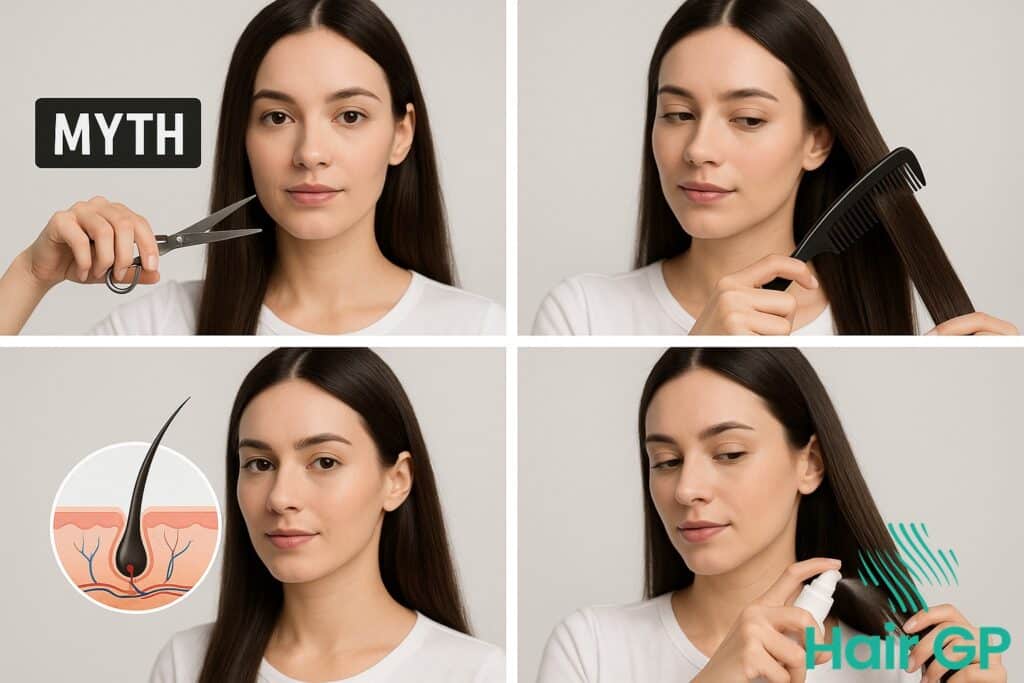Introduction
Have you ever been told that regular haircuts will make your hair grow faster? This persistent belief has circulated for generations, leading countless people to book frequent salon appointments in hopes of achieving longer locks more quickly. However, the relationship between cutting hair and encouraging it to grow faster is one of the most widespread hair myths that deserves scientific scrutiny.
The truth about hair growth lies in understanding what actually happens beneath your scalp. Your hair follicles, the tiny structures embedded in your skin, are responsible for producing each individual hair shaft. These follicles operate according to a predetermined biological cycle that remains largely unaffected by what happens to the visible portion of your hair above the surface.
In this comprehensive guide, we’ll explore the fascinating science behind how hair actually develops and grows, examining the intricate processes that occur at the follicular level. We’ll then tackle the cutting myth head-on, explaining why so many people believe trimming promotes faster growth and revealing what’s really happening when you notice changes after a haircut.
More importantly, we’ll identify the genuine factors that influence your hair growth rate – from genetics and nutrition to hormonal changes and lifestyle choices. Finally, we’ll provide evidence-based strategies for maintaining healthy hair and optimal growth conditions, including when trimming actually benefits your hair’s appearance and health. By the end, you’ll have a clear, scientific understanding of what truly affects hair growth and how to care for your hair most effectively.
Key Takeaways – TL/DR
- Cutting your hair does not make it grow faster – hair growth occurs at the follicle level in your scalp
- Hair typically grows about half an inch per month regardless of cutting frequency
- Regular trims help maintain hair health by removing split ends and preventing breakage
- Factors like genetics, diet, and hormones actually influence your hair growth rate
The Science Behind Hair Growth
Understanding hair growth requires examining the intricate biological processes occurring within your scalp. Hair follicles, tiny tube-like structures embedded deep in the skin, serve as the manufacturing centres for each strand of hair. These follicles contain specialised cells that divide rapidly, creating the hair shaft that eventually emerges from your scalp’s surface. The process begins at the follicle’s base, where the hair bulb houses the matrix cells responsible for producing the proteins that form your hair.
Hair growth occurs in three distinct phases known as the hair growth cycle. The anagen phase, lasting 2-6 years, represents the active growth period when follicles produce new hair cells continuously [1]. During this phase, hair grows at an average rate of approximately 0.35 millimetres per day, or roughly 1 centimetre per month [2]. The catagen phase follows, lasting 2-3 weeks as the follicle shrinks and detaches from the blood supply. Finally, the telogen phase occurs when hair rests for 2-3 months before naturally shedding to make way for new growth.
The hair shaft itself consists of three layers: the medulla at the centre, the cortex providing strength and colour, and the protective hair cuticle forming the outermost layer. As new cells form at the follicle base, they push existing cells upward, causing the hair shaft to extend beyond the scalp. This upward movement is entirely driven by cellular activity within the follicle, not by external manipulation. The growth rate remains relatively consistent throughout the anagen phase, determined by genetic factors, hormonal influences, and overall health rather than external interventions applied to the visible hair shaft.

The Hair Cutting Myth Explained
The hair cutting myth persists because it seems logical on the surface, but the reality is quite different. When you cut your hair, you’re only trimming the dead ends that have already grown out from your scalp. Since hair growth occurs at the follicle level beneath your skin, removing length from the tips cannot possibly influence the speed at which new hair makes its way from your roots. Your hair grows at a predetermined rate based on genetics, hormones, and overall health, regardless of how frequently you visit the salon for a trim.
So why do so many people firmly believe that regular trims help their hair grow faster? The answer lies in perception rather than actual growth acceleration. When you eliminate damaged split ends through cutting, your hair immediately looks healthier, fuller, and more vibrant. This dramatic visual improvement creates the illusion of faster growth, when in reality, you’re simply seeing your existing hair in much better condition. Without those frayed, broken ends weighing it down, your hair appears to have significantly more volume and apparent length.
The genuine benefits of regular trims relate to hair health rather than growth speed. By removing split ends before they can travel up the hair shaft, you prevent further breakage that could result in shorter-looking hair over time. This protective maintenance approach helps you retain length more effectively, making it appear as though your hair is growing faster when you’re actually just maintaining and preserving what you’ve already grown through better care.

What Really Affects Hair Growth Rate
Understanding your hair growth rate requires examining the complex interplay of biological and environmental factors that influence each follicle’s activity. While many believe external treatments can dramatically accelerate growth, the reality involves deeper physiological processes that determine how quickly your hair develops from root to tip.
Genetics and Hormonal Factors
Your genetic blueprint fundamentally determines your individual hair growth rate, establishing the natural cycle length for each follicle on your scalp. Inherited traits influence not only how fast your hair grows but also your hair type, thickness, and overall growth patterns. Hormones play an equally crucial role, with androgens like testosterone and DHT significantly impacting follicle function and growth phases. Oestrogen generally promotes hair growth by extending the anagen phase, whilst declining hormone levels during menopause or andropause can slow growth rates considerably. Age-related hormonal changes naturally reduce the hair growth rate over time, with follicles gradually producing finer, shorter strands as cellular regeneration processes become less efficient.
Nutrition and Lifestyle Impact
Proper nutrition directly supports optimal follicle function and promotes hair growth through essential building blocks. Adequate protein intake provides the keratin precursors necessary for strong hair shaft formation, whilst iron deficiency can significantly impair growth rates [3]. B-vitamins, particularly biotin and folate, support cellular division within the follicle, and vitamin D helps maintain a healthy scalp environment for optimal growth conditions [4]. Chronic stress elevates cortisol levels, which can prematurely shift follicles into the resting phase and reduce overall growth rates. Regular exercise improves scalp circulation, delivering nutrients more effectively to follicles, whilst adequate sleep allows for proper cellular repair and regeneration processes essential for maintaining consistent hair growth rate.

Best Practices for Healthy Hair Growth
Maintaining healthy hair requires consistent care and smart habits that protect your strands from damage whilst supporting natural growth. The foundation of any effective hair care routine starts with understanding how daily practices impact your hair’s condition and growth potential.
Regular trims play a crucial role in keeping hair healthy by removing split ends before they travel up the hair shaft. Schedule appointments every 6-8 weeks to prevent damage from spreading, which can lead to breakage and the appearance of slower growth. This simple practice ensures your hair looks fuller and feels stronger.
Heat styling tools pose one of the biggest threats to hair health. When using hot tools like straighteners, curling irons, or blow dryers, always apply a heat protectant product first. Keep temperatures below 180°C and limit heat styling to 2-3 times per week. Allow hair to air dry whenever possible to minimise thermal damage.
Proper shampooing technique supports scalp health, which directly impacts hair growth. Wash 2-3 times weekly using lukewarm water, focussing shampoo on the scalp rather than the lengths. Follow with conditioner applied mid-length to ends.
Protect your hair healthy routine by sleeping on silk pillowcases, avoiding tight hairstyles, and eating a balanced diet rich in protein and vitamins to nourish follicles from within.
Conclusion
The science is clear: cutting your hair does not make it grow faster. Hair growth occurs at the follicle level in your scalp, with each strand growing approximately half an inch per month regardless of how frequently you visit the salon. This fundamental biological process remains constant, and no amount of trimming can accelerate the rate at which your hair follicles produce new cells.
However, this doesn’t diminish the importance of regular trims for maintaining healthy hair. While trimming won’t make your hair grow faster, it plays a crucial role in preserving hair health by removing split ends and preventing damage from travelling up the hair shaft. This maintenance approach helps your hair retain length more effectively over time.
The key to achieving your hair goals lies in managing realistic expectations about hair growth whilst focusing on overall hair health. Rather than seeking quick fixes or believing myths about how to make hair grow faster, invest in practices that support your hair’s natural growth cycle. This includes maintaining a balanced diet, protecting your hair from excessive heat and chemical damage, and yes, getting regular trims to keep your hair looking its best.
Remember, patience and consistent care are your greatest allies in achieving the healthy hair you desire.
Frequently Asked Questions
Most hairstylists recommend trimming every 6-8 weeks to remove split ends and maintain hair health, though this varies by hair type and styling habits.
Hair growth can vary slightly with seasons due to hormonal changes and vitamin D levels, but the difference is minimal compared to genetic factors.
No hairstyle makes hair grow faster, but protective styles that reduce breakage can help you retain more length over time.
References
- Hoover E, Alhajj M, Flores JL. Physiology, Hair. StatPearls. 2023 Jan. PMID: 29763123
- Robbins C, Mirmirani P, Messenger AG, Birch MP, Youngquist RS, Tamura M et al.. What women want - quantifying the perception of hair amount: an analysis of hair diameter and density changes with age in caucasian women. Br J Dermatol. 2012. PMID: 22524482
- Almohanna HM, Ahmed AA, Tsatalis JP, Tosti A. The Role of Vitamins and Minerals in Hair Loss: A Review. Dermatol Ther (Heidelb). 2019. PMID: 30547302
- Guo EL, Katta R. Diet and hair loss: effects of nutrient deficiency and supplement use. Dermatol Pract Concept. 2017. PMID: 28243487







